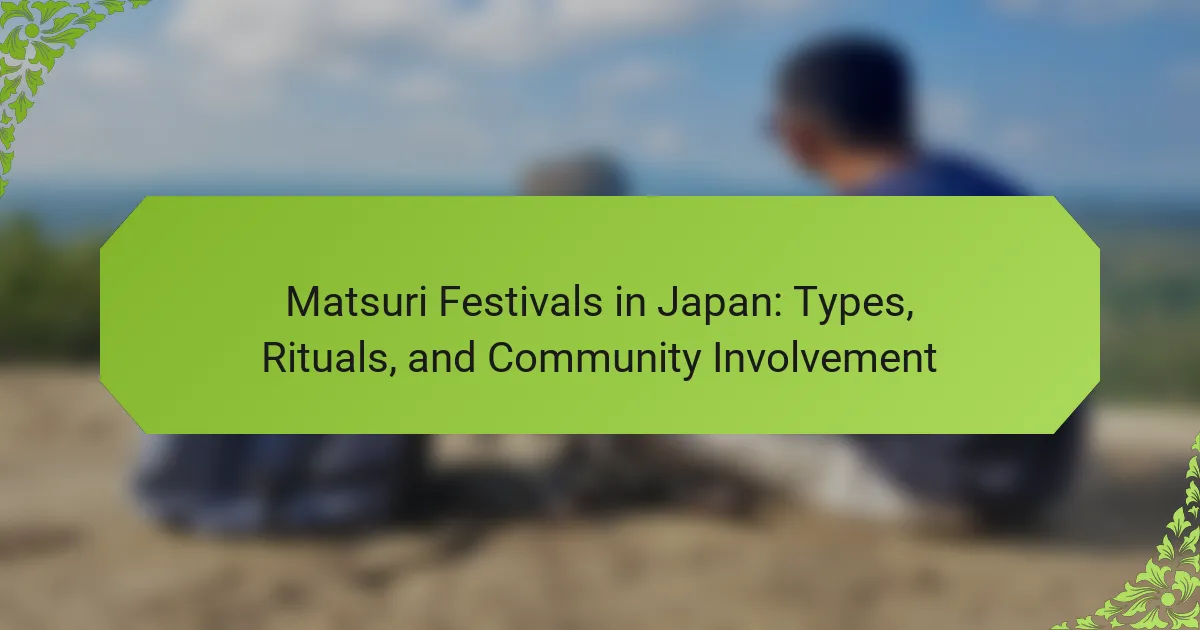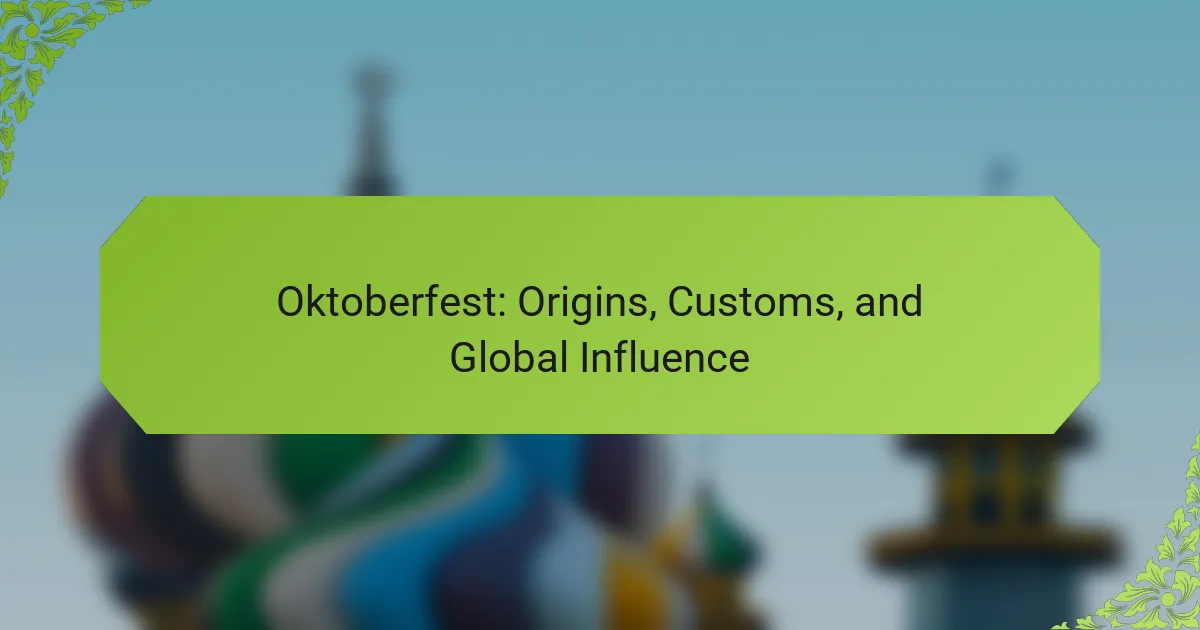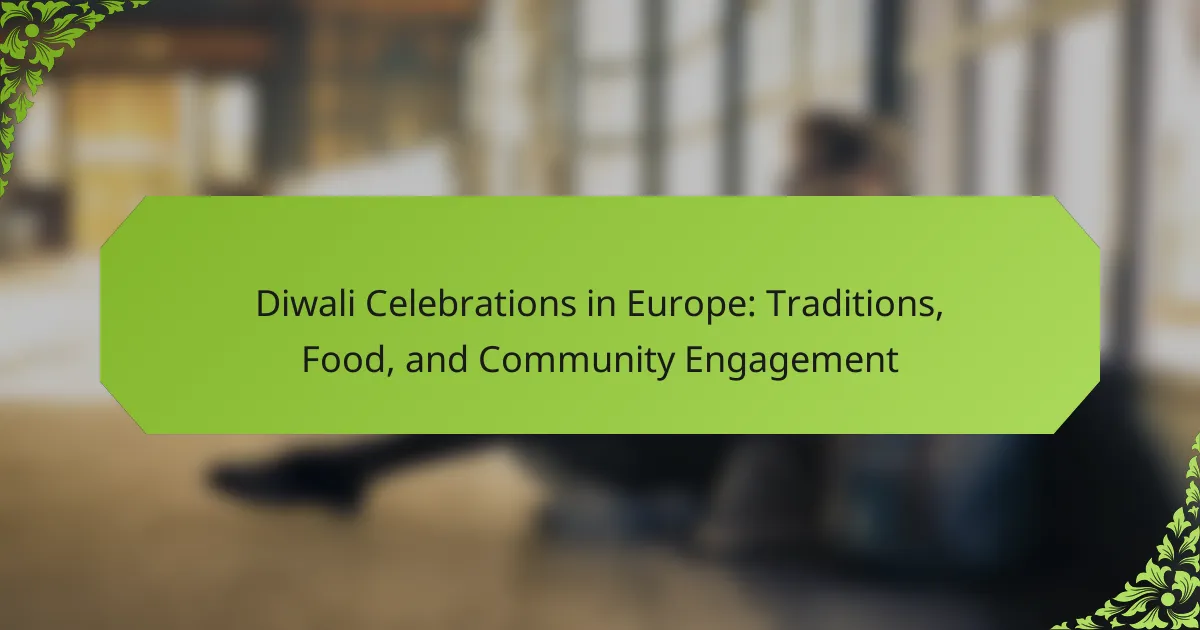Matsuri festivals in Japan offer a vibrant glimpse into local culture, showcasing unique traditions and community spirit. This article explores the various types of festivals, highlights key rituals, and emphasizes the importance of community involvement. Additionally, it addresses modern challenges faced by these celebrations and the innovative approaches being adopted to preserve their essence. Discover how Matsuri festivals continue to engage and unite communities across Japan.
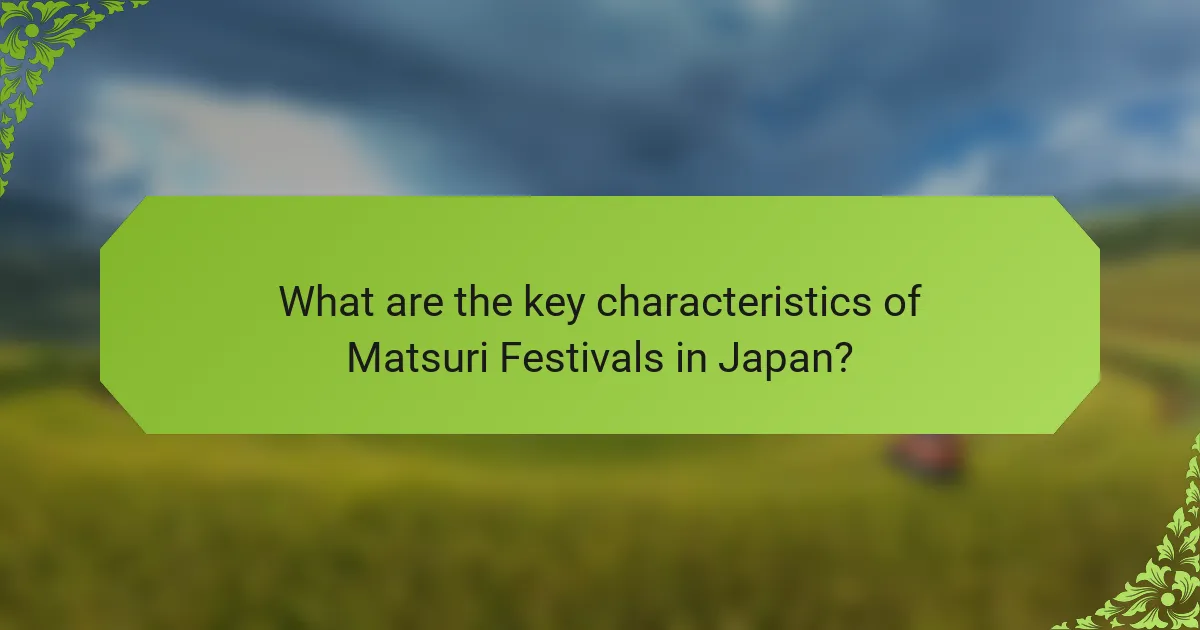
What are the key characteristics of Matsuri Festivals in Japan?
Matsuri festivals in Japan feature vibrant parades, traditional rituals, and strong community participation. These festivals showcase unique floats, music, and dance, reflecting local culture and history. The key characteristics include seasonal timing, religious significance, and elaborate costumes. Community involvement is essential, as locals contribute to preparations and participate in celebrations, fostering social bonds.
How do Matsuri Festivals reflect Japanese culture and traditions?
Matsuri festivals reflect Japanese culture and traditions through vibrant celebrations, rituals, and community participation. These festivals often honor deities, mark seasonal changes, and strengthen community bonds. Unique attributes include elaborate floats, traditional attire, and diverse regional practices. Matsuri festivals serve as a living expression of Japan’s rich heritage and collective identity.
What are the seasonal variations in Matsuri Festivals across Japan?
Matsuri festivals in Japan vary seasonally, reflecting local traditions and agricultural cycles. Spring festivals celebrate new beginnings, while summer events focus on community revelry. Autumn festivals often express gratitude for harvests, and winter celebrations emphasize purification rituals. Each season brings distinct rituals and community involvement, showcasing Japan’s rich cultural heritage.
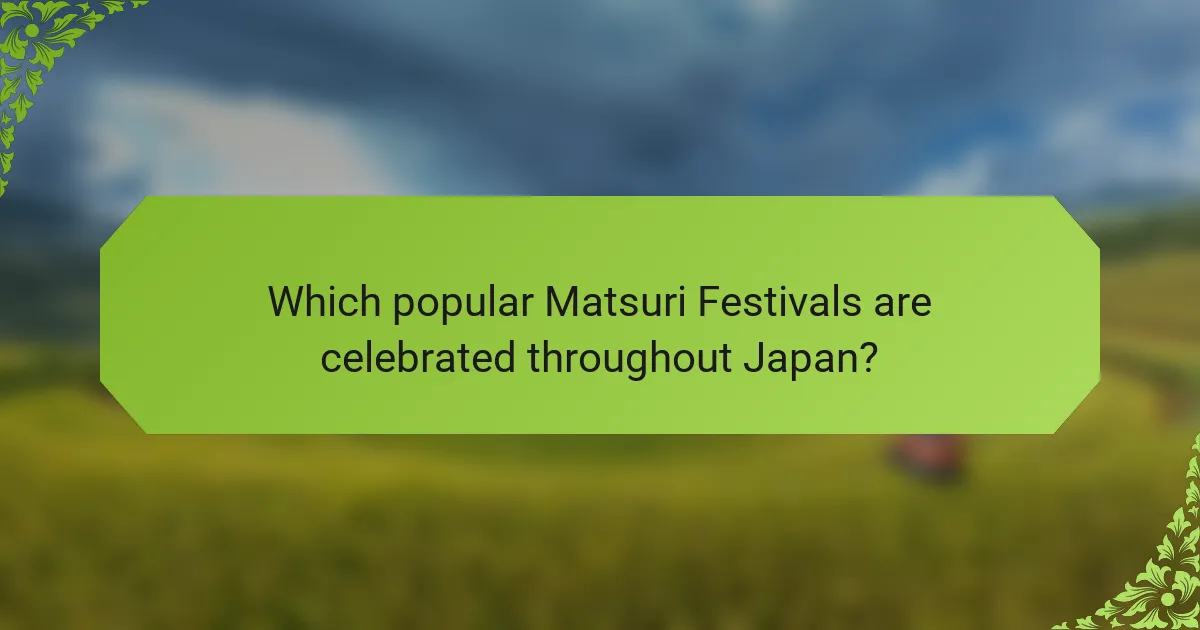
Which popular Matsuri Festivals are celebrated throughout Japan?
Japan celebrates numerous Matsuri festivals, each showcasing unique traditions and community spirit. Notable examples include Gion Matsuri in Kyoto, which lasts the entire month of July, and the Nebuta Matsuri in Aomori, featuring vibrant floats and performances in August. Other significant festivals are the Sapporo Snow Festival, known for its impressive ice sculptures, and the Takayama Matsuri, celebrated in spring and autumn with elaborate floats. Each festival fosters community involvement, highlighting local culture and heritage.
What unique features distinguish the Gion Matsuri in Kyoto?
The Gion Matsuri in Kyoto is distinguished by its elaborate floats, community participation, and historical significance. The festival features stunning yama and hoko floats, which are intricately decorated and paraded through the streets. Another unique aspect is the involvement of local neighborhoods, as each district contributes to the festival’s organization and celebrations. The event also has deep cultural roots, dating back to the 9th century, making it a vital part of Kyoto’s heritage. Additionally, the festival includes rituals such as the purification ceremony, which emphasizes its spiritual importance.
How does the Nebuta Matsuri in Aomori incorporate local mythology?
The Nebuta Matsuri in Aomori incorporates local mythology through elaborate floats depicting legendary figures. These floats often represent deities, historical heroes, and mythical creatures from Japanese folklore. The festival’s performances include traditional dances that narrate these stories, fostering community engagement and cultural pride. Each float is intricately designed, showcasing unique attributes that reflect Aomori’s rich cultural heritage. This integration of mythology enhances the festival’s significance, connecting participants and spectators to their ancestral roots.
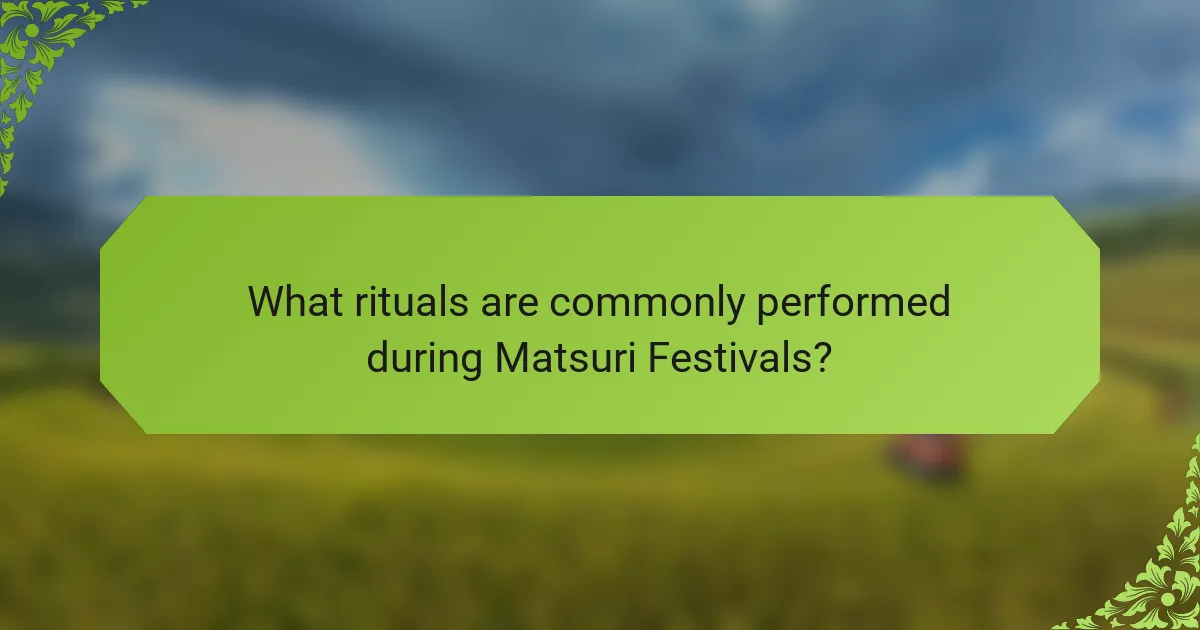
What rituals are commonly performed during Matsuri Festivals?
Matsuri festivals in Japan feature various rituals, including processions, traditional performances, and offerings to deities. These rituals foster community involvement and cultural preservation. Common practices include the carrying of portable shrines (mikoshi), dance performances (odori), and the lighting of lanterns (chochin). Each festival showcases unique local traditions, enhancing regional identity.
How do purification rituals enhance the spiritual significance of Matsuri?
Purification rituals significantly enhance the spiritual significance of Matsuri by fostering a sense of renewal and connection to the divine. These rituals, such as misogi, involve cleansing practices that prepare participants spiritually and physically for the festival. They symbolize the removal of impurities and the invitation of positive energies, reinforcing community bonds through shared spiritual experiences. Additionally, these rituals often incorporate unique elements, like sacred objects or specific chants, that highlight the cultural heritage and deepen the participants’ engagement with their traditions.
What role do traditional costumes play in Matsuri celebrations?
Traditional costumes are central to Matsuri celebrations, symbolizing cultural heritage and community identity. They enhance the festive atmosphere, allowing participants to express their regional pride and connect with traditions. Each costume often features unique designs and colors that reflect local history and folklore, making them a vital part of the celebration. Additionally, the act of wearing these costumes fosters a sense of belonging and unity among community members during the festivities.
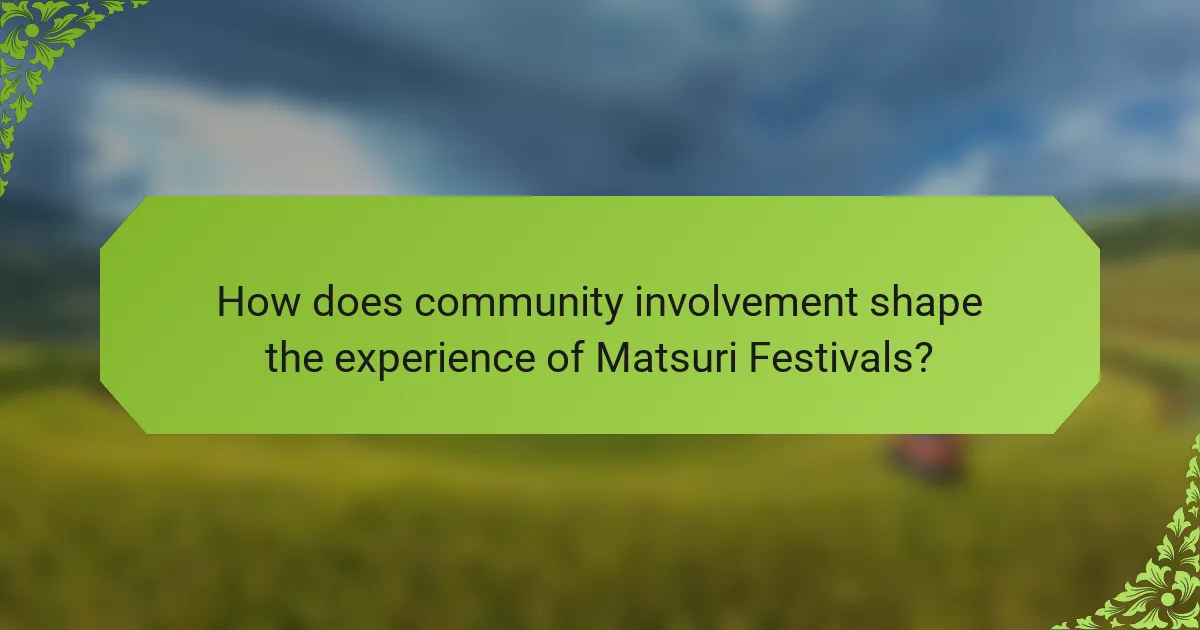
How does community involvement shape the experience of Matsuri Festivals?
Community involvement significantly enhances the experience of Matsuri Festivals in Japan. Local participation fosters a sense of belonging and cultural pride. Residents contribute by organizing events, preparing traditional foods, and performing rituals. This collaboration strengthens community ties and ensures the preservation of cultural heritage. Festivals become vibrant expressions of local identity, engaging residents and visitors alike in shared celebrations.
What roles do local volunteers play in organizing Matsuri?
Local volunteers play crucial roles in organizing Matsuri festivals, ensuring community engagement and cultural preservation. They assist with planning, logistics, and execution of events, fostering a sense of belonging. Volunteers manage activities, coordinate with vendors, and promote participation. Their involvement strengthens community ties and enhances the festival experience.
How do Matsuri Festivals foster community spirit and cooperation?
Matsuri festivals foster community spirit and cooperation through shared rituals and collective participation. These events create a sense of belonging as locals engage in traditional practices, such as parades and performances. Community members collaborate to prepare for the festivals, strengthening social bonds. Additionally, matsuri festivals often involve local businesses and organizations, promoting economic cooperation and support. The unique aspect of these festivals is their ability to unite diverse groups under a common cultural heritage, enhancing community identity and resilience.

What challenges do Matsuri Festivals face in modern times?
Matsuri Festivals face several challenges in modern times, including declining participation, urbanization, and cultural preservation. Many younger generations show less interest in traditional practices, leading to a decrease in community involvement. Urbanization threatens the authenticity of these festivals as cities expand and traditional venues disappear. Additionally, the need to adapt to modern societal norms can dilute the unique attributes of these events, risking the loss of cultural heritage. As a result, organizers must find innovative ways to engage communities while preserving the essence of Matsuri Festivals.
How are traditional practices preserved amidst urbanization?
Traditional practices, like Matsuri festivals in Japan, are preserved through community engagement, rituals, and adaptation to urban settings. Festivals maintain cultural identity by involving local residents in planning and participation. Unique rituals, such as traditional performances and offerings, connect generations and reinforce community bonds. Urbanization prompts festivals to adapt, incorporating modern elements while retaining core traditions. This balance ensures Matsuri remain vibrant, fostering a sense of belonging amidst changing environments.
What impact does tourism have on local Matsuri Festivals?
Tourism significantly enhances local Matsuri festivals by increasing attendance and funding. Visitors contribute to the local economy, allowing communities to invest in festival activities and preservation. This influx often leads to a revival of traditional practices and rituals, ensuring cultural continuity. Additionally, tourism promotes community involvement, as locals engage in organizing events to showcase their heritage.
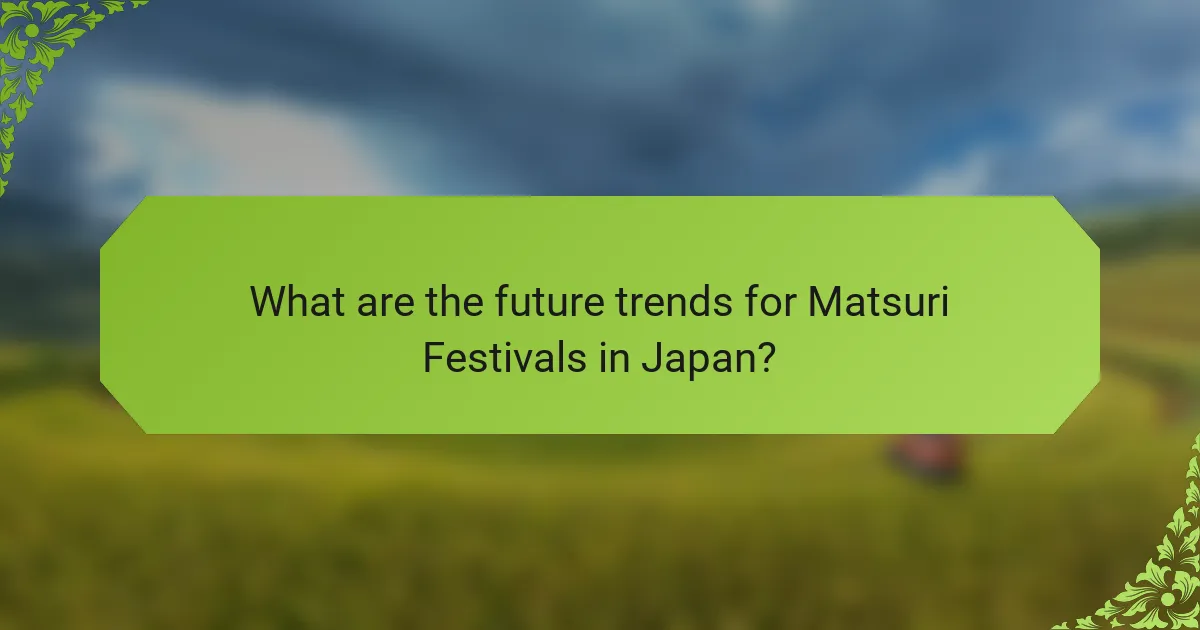
What are the future trends for Matsuri Festivals in Japan?
Matsuri festivals in Japan will increasingly embrace technology, sustainability, and global cultural exchange. Digital platforms will enhance participation and engagement, allowing remote audiences to experience festivals virtually. Sustainable practices will become essential as communities aim to minimize environmental impact. Collaborations with international artists will enrich traditional rituals, fostering a deeper understanding of cultural heritage. Additionally, younger generations will play a vital role in maintaining and innovating these festivals, ensuring their relevance in a rapidly changing society.
How is technology being integrated into Matsuri celebrations?
Technology is enhancing Matsuri celebrations through digital engagement, augmented reality, and social media integration. Festivals now utilize apps for event schedules, live streaming, and interactive experiences. Drones capture aerial views, while virtual reality immerses participants in traditional rituals. These innovations foster community involvement and attract younger audiences.
What innovative approaches are being adopted to attract younger generations?
Matsuri festivals in Japan are adopting innovative approaches to engage younger generations through interactive experiences and digital integration. Festivals now feature live-streaming, social media promotions, and immersive workshops, enhancing participation. Collaborations with contemporary artists and musicians attract youth, while eco-friendly practices resonate with their values. These strategies create vibrant community involvement, ensuring the preservation of cultural heritage while appealing to modern sensibilities.
What best practices can enhance the sustainability of Matsuri Festivals?
Implementing best practices can significantly enhance the sustainability of Matsuri Festivals. Engaging local communities in planning promotes environmental awareness and resource conservation.
Utilizing eco-friendly materials for decorations and food packaging minimizes waste. Encouraging public transportation or walking reduces carbon footprints.
Incorporating educational programs about cultural heritage and sustainability fosters a sense of responsibility among attendees. Collaborating with local businesses for sustainable sourcing supports the economy while reducing environmental impact.
Monitoring waste management practices ensures recycling and composting efforts are effective, creating a cleaner festival environment.
